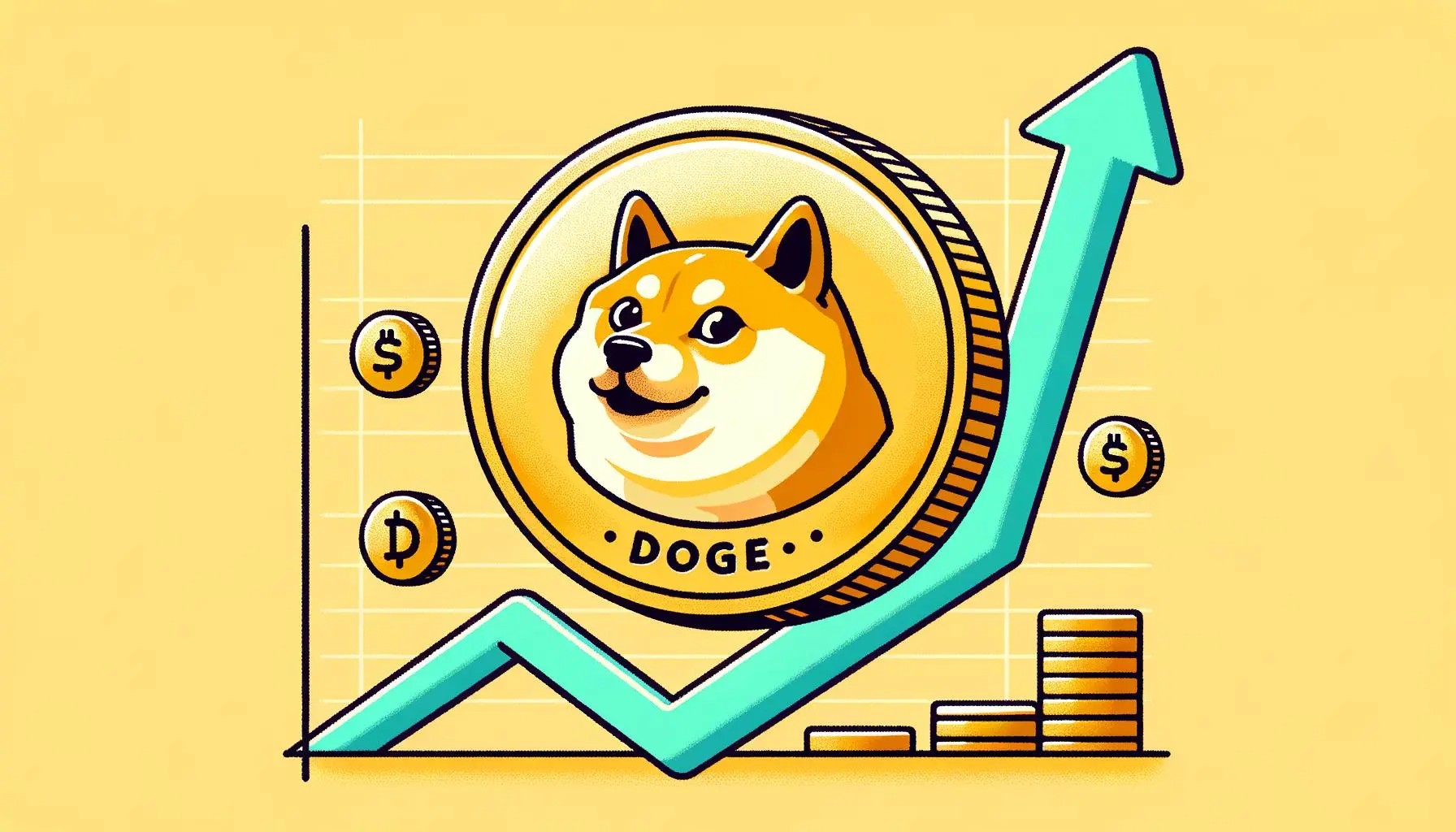It is no exaggeration to say that the Nifty 50, one of the prime stock indices of the National Stock Exchange (NSE), encapsulates the spirit of the Indian stock market. Ever since its inception in 1996, the Nifty 50 has undergone multiple changes, staying current with the tides of economic transformations. Initially home to sectors such as commodities and traditional industries, the index has evolved with India’s economic liberalization, welcoming technology, e-commerce, and service-based industries. It now provides an accurate reflection of the new-age Indian economy, featuring a balanced mix of sectors like Information Technology, Banking, Auto, Pharma, and more.
What makes the Nifty 50 so significant? Its composition ensures that it mirrors the overall economic health of India. When the economy flourishes, corporate profits soar, investors’ confidence strengthens, and the Nifty rises. Conversely, during economic slowdowns, the index tends to fall as profits dwindle and investor sentiment wanes. In the last few months, Nifty has witnessed a robust growth of over thousands of points, creating a bullish sentiment in the market and providing investors with lucrative profits. However, in recent days, investors have been worried about Nifty share’s upcoming trend and whether it will be able to match expectations as the global economy faces turmoil. Hence, our Nifty share price prediction aims to dive deeper into the Indian stock market and guide investors with a strategic investment plan.
Nifty: A Quick Look
Introduced by the National Stock Exchange (NSE) on April 21, 1996, NIFTY 50 is a pivotal market index that is a hybrid word, combining ‘National Stock Exchange’ and ‘Fifty.’ As the flagship index of the NSE, NIFTY 50 serves as a benchmark index, showcasing the top 50 out of the 1600 equity stocks traded on the exchange.
The chosen stocks span 12 key sectors of the Indian economy, including information technology, financial services, consumer goods, entertainment and media, metals, pharmaceuticals, telecommunications, cement and related products, automobiles, pesticides and fertilizers, energy, and other diverse services.
NIFTY is one of the two primary national indices of India, the other being the SENSEX, which originates from the Bombay Stock Exchange. Ownership of NIFTY rests with the India Index Services and Products (IISL), a wholly-owned subsidiary of the National Stock Exchange Strategic Investment Corporation Limited.
With its keen focus on the trends and patterns of blue-chip companies, NIFTY monitors the most liquid and sizable Indian securities.
The NIFTY family encompasses a wide range of indices, including the NIFTY 50, NIFTY IT, NIFTY Bank, and NIFTY Next 50. Additionally, NIFTY forms part of the Futures and Options (F&O) segment of the NSE, which handles derivatives.
Nifty 50: Journey So Far
The NIFTY stock index is supervised by a professional team at NSE Indices Limited. They have established an Index Advisory Committee, which lends its expertise and provides guidance on broad issues related to equity indices.
The NIFTY 50 indices are calculated using a methodology that is both float-adjusted and market-capitalization-weighted. According to this approach, the index level signifies the total market value of the stocks included in the index during a specific base period. For the NIFTY 50 index, this base period is November 3, 1995, when the index base value was set at 1000, and its base capital was recorded at Rs. 2.06 trillion.
Stock Manipulation And Scams
India’s stock exchanges, BSE and NSE, have experienced several instances of corruption scandals. A number of corporate groups in India have been accused of manipulating stocks at different times.
One noteworthy case is the NSE co-location scandal. On July 8, 2015, journalist Sucheta Dalal published an article on Moneylife, suggesting that certain NSE employees were illicitly sharing sensitive high-frequency trading or co-location server data with a specific group of market participants. This privileged information allegedly allowed these participants to trade faster than their rivals. The NSE countered these allegations by claiming defamation in the article and, on July 22, 2015, filed a suit against Moneylife for ₹1 billion (US$13 million).
However, on September 9, 2015, the Bombay High Court dismissed NSE’s case and imposed a fine of ₹5 million (US$63,000) on NSE in this defamation case against Moneylife. The court directed NSE to pay ₹150,000 (US$1,900) each to journalists Debashis Basu and Sucheta Dalal, with the remaining ₹4.7 million (US$59,000) going to two hospitals.
The Bombay High Court stayed the order on costs for two weeks, pending the appeal hearing filed by the NSE.
The board also issued orders against 16 individuals, including former Managing Directors and CEOs Ravi Narain and Chitra Ramakrishna. They were ordered to disgorge 25% of their salaries from that period, along with interest, into the Investor Protection and Education Fund. Additionally, these individuals were prohibited from trading in the markets or holding any position in a listed company for five years.
Nifty 50 Share Price Prediction: Price History
From the day it was first instituted on November 3, 1995, the Nifty 50 index, consisting of the 50 leading companies on the National Stock Exchange (NSE) of India, has been a barometer of the Indian economy.
When the Nifty 50 was launched in 1995, it was assigned a base value of ₹1000. In these nascent stages, the index was dominated by commodities and manufacturing sectors. Despite the economic liberalization initiated in the early 90s, the Indian economy’s expansive growth took some time to materialize. By the close of 1999, the Nifty 50 had ascended to about ₹1362, indicating modest gains in its early years.
The onset of the 2000s heralded a turbulent period for the index, with it echoing the highs of the technology boom and the lows of the consequent dot-com bust. Propelled by the enthusiasm around IT and tech stocks, the Nifty 50 skyrocketed to over ₹1800 in early 2000. However, by the end of the year, it had plummeted back to around ₹1100.
The early 21st century was challenging for global markets, and the Nifty 50 was no exception. Following the dot-com bust, it took the Nifty 50 a few years to recover. But by 2003, as the effects of the bust were wearing off, and with the Indian economy showing signs of robust growth, the Nifty 50 started climbing again. By the end of 2003, the index was back up, standing near ₹1900.
This period is often hailed as the golden era of the Indian stock market. Propelled by robust GDP growth, an influx of foreign investments, and strong corporate earnings, the Nifty 50 embarked on a record-breaking bull run. By the end of 2007, the index had soared to an unprecedented level of approximately ₹6200.
The collapse of Lehman Brothers in 2008 sparked a global financial crisis that saw markets worldwide plummet. The Nifty 50 was not immune to this crisis, and by early 2009, the index had bottomed out at about ₹2500, losing more than half of its value.
Post-crisis, as the global economy gradually stabilized and with strong domestic economic reforms, the Nifty 50 rebounded. By the end of 2010, it had crossed the ₹6000 mark again. The following decade saw the index scaling new heights, driven by factors like the emergence of new industries, robust foreign investment, and positive investor sentiment.
By February 2020, the Nifty 50 touched a record high of approximately ₹12200. However, the sudden outbreak of the COVID-19 pandemic caused significant disruption, dragging the index down to about ₹7600 by late March 2020.
Despite the economic shock induced by the pandemic, the Nifty 50 demonstrated resilience and recovered strongly as the economy gradually reopened. By the end of 2022, the index was hovering near the ₹17000 mark, and recently it surpassed its all-time high, touching the level of ₹19K.
Nifty Share Price: Technical Analysis
Recently, the Nifty share price experienced a solid bullish trend, which has brought more buying pressure to the market. The market was heavily influenced due to the poor performance of the tech sector; however, it showed a strong recovery in the last few months and touched an all-time high. Despite facing critical support levels, Nifty has managed to display surprising resilience. A thorough technical analysis of Nifty 50 reveals a few bullish indicators, which may soon send the price to new highs. Investors should exercise caution as the short-term growth strategy for Nifty appears uncertain. The current upward trajectory may not be sustainable as the global stock market faces turmoil.
According to TradingView, the Nifty 50 index is currently trading at ₹19,398, reflecting an increase of over 0.05% in the last 24 hours. Our technical evaluation of Nifty indicates that the bullish momentum may soon fade as bears may make a comeback to prevent the price from surging to a new high above ₹20,000. Examining the daily price chart, Nifty share price has found support near the ₹18.8K level, from which the price may try to gain further momentum and breach upcoming Fib channels. As the Nifty price’s bearish levels trade with the surging EMA20, bears may soon gain confidence and open short positions, pushing the price to the South in the coming days. The Balance of Power (BoP) indicator is currently trading in a bearish region zone at 0.09, hinting at a downward correction ahead.
To thoroughly analyze the price of Nifty shares, it is crucial to take a look at the RSI-14 indicator. The RSI indicator recently experienced a massive surge following a breakout above ₹18.8K. The trend line has touched the overbought region at level 79, and there’s an increased bearish reversal momentum building up to begin a downward correction for the Nifty price. It is anticipated that Nifty’s price will soon attempt to break below its 38.6% Fibonacci level to achieve its short-term bearish goals. If it fails to drop below this Fibonacci region, an uptrend might occur.
As the SMA-14 continues its upward swing near the 69 level, it trades way below the RSI line, potentially accelerating the stock’s upward correction on the price chart. If Nifty shares surge further, it can pave the way to a new resistance at ₹19,500. A breakout above will drive the share price toward the upper limit of the Bollinger band at ₹19,800.
Conversely, if the Nifty fails to hold above the critical support level of ₹18,888, a sudden collapse may occur, resulting in further price declines and causing the Nifty share to trade near the Bollinger band’s lower limit of ₹18,100. If the price fails to continue a trade above ₹18,000, it may trigger a more significant bearish downtrend.
Nifty Share Price Prediction By Blockchain Reporter
Nifty Share Price Prediction 2023
Based on extensive market analysis and the ongoing economic trends, we anticipate a positive movement for the Nifty 50 index by the end of 2023. Considering the broader macroeconomic factors and the revival of investor interest post-pandemic, we forecast an average trading price of around ₹18,000, with a minimum value of ₹16,500 and a maximum potential of reaching ₹20,000. This prediction factors in India’s promising economic recovery, continued foreign investment inflows, and the potential of emerging sectors.
Nifty Share Price Prediction 2024
For 2024, as the global and domestic economies stabilize further and technological advancements continue to drive growth, the Nifty 50 could experience a gradual uptrend. Our projections suggest an average price of ₹20,000, with potential dips to ₹18,000 during market corrections and peaks potentially reaching ₹23,000. This takes into account technological trends, government policies, and market sentiment.
Nifty Share Price Prediction 2025
Moving into 2025, the Indian economy is expected to gain robustness, propelling the Nifty 50 index further. Our analysis predicts an average trading price of ₹22,500, with a minimum price of ₹20,500 and a maximum price of ₹25,000. This prediction is based on a steady improvement in India’s economic indicators, continued foreign direct investment, and strengthening domestic consumption.
Nifty Share Price Prediction 2026
By 2026, with the expected stability in the global economic climate and the positive outlook for India’s growth story, the Nifty 50 could show strong growth. The average trading price for this year is predicted to be ₹25,000, with a potential low of ₹23,000 and a maximum high of ₹28,000.
Nifty Share Price Prediction 2027
In 2027, given the continuing growth momentum in India’s economy and expected improvements in corporate earnings, we predict that the Nifty 50 index may have an average trading price of ₹27,500, a minimum price of ₹25,500, and could potentially surge to ₹30,000.
Nifty Share Price Prediction 2028
Our projections for 2028 predict the average trading price of the Nifty 50 index at ₹30,000, with a minimum price of ₹28,000 and a maximum price of ₹33,000. These predictions are based on the anticipated steady growth of the Indian economy, the strong performance of major sectors, and stability in global markets.
Nifty Share Price Prediction 2029
By 2029, we forecast the Nifty 50 to continue its upward trajectory, reflecting the strength of India’s economy. The average trading price for the year could be ₹33,000, with the index potentially dipping to ₹30,000 and peaking at ₹36,000.
Nifty Share Price Prediction 2030
Looking into 2030, our analysis projects that the Nifty 50 index could have an average trading price of ₹36,000, with a minimum price of ₹33,000 and a potential high of ₹40,000. This prediction is based on continued economic development, positive investor sentiment, and sustained growth in the major sectors of the Indian economy.
Nifty Price Forecast By Experts
Taking into account the 10-year G-Sec yield standing at 7.2%, an earnings yield gap of 1.6%, and the expected FY25E EPS at INR 1,076, the brokerage has calculated a target price of INR 19,250 for Nifty by March 2024. This suggests a potential growth of 8%. “Our assumed P/E ratio of 17.9x is higher than the average next twelve months (NTM) PE since 2005, which stood at 16x,” stated Vora.
Goldman Sachs predicts that Nifty has the potential to reach the 20,000 mark in the upcoming 12 months. This projection is based on anticipated double-digit earnings growth in the years 2023-2024, indicating an approximately 15% increase from the present levels.
In addition, Goldman Sachs advocates for the acquisition of Indian equities, stating that it is an opportune moment to gather high-quality stocks available at justifiable price levels.
Indian Market Indices Predictions: A Short Overview
SENSEX Outlook
At present, SENSEX, holding strong at ₹65,446, is exhibiting a positive trend. For those currently in long positions, it is recommended to hold, with a daily closing stop loss of ₹64,938. If the SENSEX dips below the ₹64,938 level upon closing, it might be an opportune moment to initiate fresh short positions.
The support levels for SENSEX are predicted to be at ₹65,274, ₹65,101, and ₹64,946, while the resistance levels are expected at ₹65,601, ₹65,757 and ₹65,929. The SENSEX’s tentative range, with an accuracy of 92%, spans from ₹64,969 to ₹65,923.
BANKNIFTY Projection
BANKNIFTY, currently at ₹45,152, is demonstrating a positive trend. If you hold long positions, it is advisable to continue with a daily closing stop loss of ₹44,877. New short positions could be initiated if BANKNIFTY falls below this level.
The anticipated support levels for BANKNIFTY are ₹45,011, ₹44,869, and ₹44,665, with resistance levels expected at ₹45,356, ₹45,560, and ₹45,702. The tentative range for BANKNIFTY, with an accuracy of 92%, is from ₹44,720 to ₹45,584.
FINNIFTY Assessment
FINNIFTY, standing at ₹20,246, is currently showcasing a positive trend. For those in long positions, continue holding with a daily closing stop loss of ₹20,232. Consider fresh short positions if FINNIFTY drops below the ₹20,232 level.
The expected support levels for FINNIFTY are ₹20,168, ₹20,090, and ₹19,976, with resistance levels projected at ₹20,360, ₹20,474, and ₹20,552. The estimated range for FINNIFTY, maintaining an accuracy of 92%, is from ₹20,232 to ₹20,552.
Should You Invest In Nifty 50? Here’s The Best Entry Point
At present, the Nifty 50 index has been showcasing a bullish trend, signalling a potential opportunity for market participants.
As per our predictions, the Nifty 50 is expected to see a substantial spike in the future. While market predictions should be treated with caution, this forecast is based on several strong indicators, including the index’s past performance, the overall health of the economy, and the performance of the sectors represented in the index.
Considering these factors, the current momentum of the Nifty 50 seems to offer an opportune entry point.
While the current momentum indicates a beneficial time to invest, it is equally important to have a risk management strategy in place. Remember, market predictions, while based on careful analysis, can never be foolproof. So, ensure that your investment strategy aligns with your risk tolerance and long-term financial objectives.
Conclusion
As a reflection of India’s booming economy, the Nifty 50 stands as an integral part of the nation’s financial framework. It offers both domestic and international investors a glimpse into the health and direction of the Indian stock market. Furthermore, the diverse representation of sectors in the Nifty 50 makes it a key indicator of the country’s economic climate. Whether for investment or trading purposes, understanding the Nifty 50 can provide crucial insights for anyone interested in the Indian financial markets.
FAQ
The Nifty 50 is a stock market index introduced by the National Stock Exchange (NSE) in India. It consists of the top 50 companies listed on the NSE and serves as a benchmark index for the Indian stock market.
The composition of the Nifty 50 is determined by the NSE Indices Limited, which selects the 50 companies based on certain criteria such as market capitalization, liquidity, and sector representation. The chosen stocks span 12 key sectors of the Indian economy.
The Nifty family includes various indices such as Nifty IT, Nifty Bank, and Nifty Next 50. These indices provide a more focused view of specific sectors or market segments.
Since its inception in 1995, the Nifty 50 has gone through periods of growth and decline. It experienced highs and lows, influenced by factors like economic conditions, global events, and investor sentiment. The share price of the Nifty 50 has reached record highs in recent years.
During the global financial crisis of 2008, the Nifty 50, like many other stock indices, experienced a significant decline. However, it recovered in the following years. During the COVID-19 pandemic, the Nifty 50 initially dropped but showed resilience and recovered strongly as the economy reopened.
According to TradingView, the current share price of the Nifty 50 is ₹19,398, reflecting a slight increase in the last 24 hours. Please note that share prices can fluctuate.
The technical analysis of the Nifty 50 suggests a recent bullish trend and an all-time high. However, caution is advised as the analysis indicates that the bullish momentum may soon fade, and bears could prevent the price from surging to new highs.
Yes, investors should exercise caution regarding the short-term growth strategy for the Nifty 50. The article mentions uncertainty in the short-term growth strategy due to the global stock market turmoil. It’s important for investors to carefully assess market conditions and make informed decisions.
The article suggests that the global stock market turmoil may impact the Nifty 50’s future performance. The Nifty 50, like other stock indices, can be influenced by global economic factors, investor sentiment, and market trends. It’s important for investors to stay informed about global market conditions and their potential impact on the Nifty 50.
READ MORE:
Kibho Cryptocurrency: A Fine Choice for Huge Crypto Returns
Xxc Renegade 1000 Xxc Price Prediction: Will This ATV Gain Popularity In 2023?
YIMUSANFENDI: The Vanguard of Information-Driven Innovation
Yes Bank Share Price Prediction 2025: Will Yes Bank Stock Recover from Crisis?
AMC Stonk-O-Tracker: The Power of Retail Investors in the Market
How Can Features of Blockchain Support Sustainability Efforts
Controlling Bitcoin Mining Hashrate: Report on Core Scientific 545M & Riot Blockchain 215M Earning
Understanding the IEX Share Price on the National Stock Exchange
Reliance Power Share Price Future Prediction 2025: Will RPOWER Stock Reach ₹100 In 2023?
Credit: Source link















































